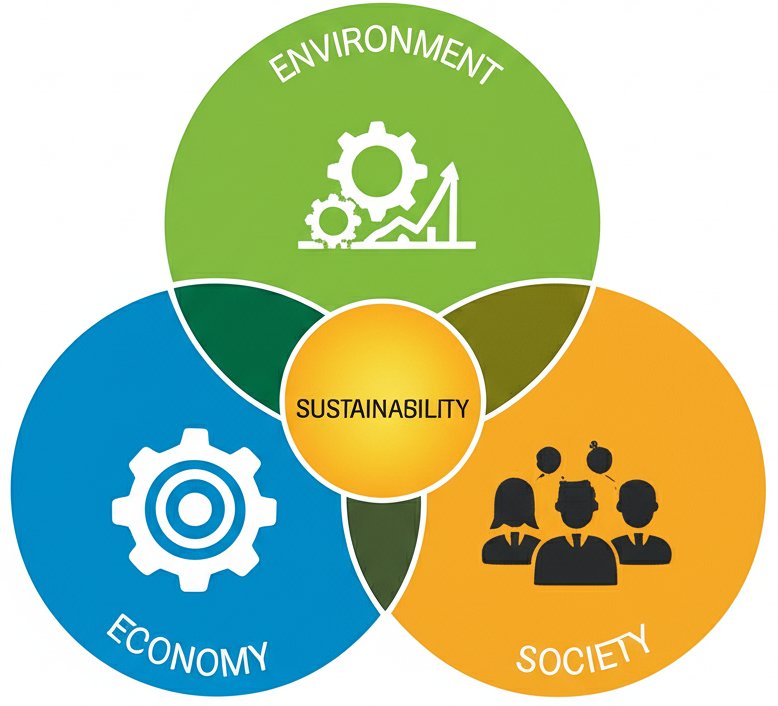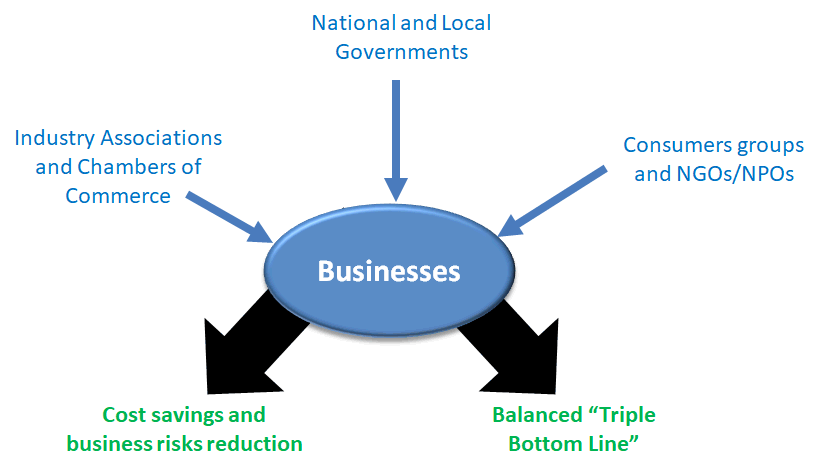Sustainable Business: |
| Hari Srinivas | |
| Concept Note Series E-119. June 2020. |
|
Abstract: This concept note explores how sustainability is increasingly recognized as a strategic advantage for businesses, aligning environmental responsibility with economic profitability. The text discusses the relevance of the triple bottom line - economic viability, environmental stewardship, and social equity - as a guiding framework for sustainable business practices. It highlights key drivers such as material and energy efficiency, which not only lower operational costs but also enhance market share and reduce regulatory risks. Case examples, such as Japan's Shinkansen and eco-labelling strategies, demonstrate how businesses are integrating sustainability to improve performance and public image. The paper concludes by emphasizing the transition toward a circular economy, where resource efficiency, product lifecycle thinking, and closed-loop systems redefine value creation for long-term resilience and growth.
Keywords: |  |
 |
|
The concept of 'Triple bottom line' balances economic viability, environmental sustainability, social equity.
|
The now familiar benefits of a business supporting sustainability include reduced costs, higher productivity, avoiding or reducing regulatory burdens, lowering liabilities, attracting and retaining the best workers, and includes improving the businesses' public image as a "green" company.
For example, environmentally sustainable building design embraces an abundance of natural sunlight, fresh outside air, and efficient energy use. A healthier, more appealing office environment equates to more productive workers who call in sick less often, with lower health-care costs, less absenteeism, higher productivity and savings on energy.
The primary driver for a business to be environmentally sound is cost savings effected through both material efficiency and energy efficiency. These two efficiences also provide opportunities for businesses to increase their market share as a "green" company, besides opening up to new eco-markets. Broader issues of environmental law compliance, reduced environmental liability, using eco-labels/certifications (eg. ISO 14001) etc. also help in enabling cost savings for the company.
 Figure 1: |
On the longer term, business action helps in reducing risks from a changing environment (including and particularly climate change) and risks associated with pollution and emissions. Non-compliance with environmental laws and regulations and other such liabilities could also increase the risks faced by a company. Avoiding these risks are also a key driver for a company to go green.
 Figure 2: |
Sustainable businesses in principle keep an eye on the "triple bottom line" [1] - not just the return of value to shareholders and owners but also their impact on society and the environment. They rate themselves on social, ecological and economic scales.
Taken together, a matrix of business actions emerge that enable a company to be environmentally friendly, using material and energy efficiencies to achieve cost savings, increase market share, and reduce risks.
| Material Efficiency |
Cost Savings
|
|
|
Increased market share
|
|
|
|
Reduced risks
|
|
|
| Energy Efficiency |
Cost savings
|
|
|
Increased market share
|
|
|
|
Reduced risks
|
|
This does not just mean being 'green': Reducing waste and pollutants, conserving resources, and using alternative energy sources are important, but so are progressive management practices, attention to employee quality-of-life issues, and volunteerism.
Ultimately, it is "Be green to make green" - Being green is not just about the environment, but it is also about saving money and creating new business opportunities.
When you buy a bullet train ticket, it comes in a small envelope. Written on the envelope is a short para on the fact that CO2 emissions from traveling by Shinkansen is about 1/8th that of airplanes, touting itself as an 'environmentally friendly transportation system'. It provides more details: If it takes 100 units of CO2 emissions to move one person for a distance of one kilometer using local trains, travel by the Bullet train emits only 81 units in comparison, while air travel emits 653 units. This is a classic case where more and more business and industry entities are using sustainability and environmental issues to sell their products or services. |
The End Goal: Aiming for a Circular Economy
While sustainability in business has primarily focused on reducing waste, conserving resources, and improving efficiencies, the ultimate objective is to transition towards a circular economy. Unlike the traditional linear model of "take, make, and dispose," a circular economy emphasizes designing products and processes that eliminate waste, keep materials in use for as long as possible, and regenerate natural systems. This shift requires businesses to rethink their supply chains, adopt innovative product designs, and engage in collaborative partnerships to create closed-loop systems.
Achieving a circular economy involves strategies such as designing products for durability, repair, and recyclability, using renewable and non-toxic materials, and implementing business models that encourage leasing or sharing rather than outright ownership. Companies can also adopt industrial symbiosis, where the waste or by-products of one process become valuable inputs for another, thereby reducing environmental impact while creating economic opportunities. Governments, industry associations, and consumers play a crucial role in accelerating this transition by demanding transparency, enforcing regulations, and incentivizing sustainable business models.
By aiming for a circular economy, businesses not only reduce their environmental footprint but also unlock new avenues for growth and resilience. In an era of resource scarcity, climate change, and increasing consumer awareness, companies that embrace circularity will gain a competitive edge, future-proof their operations, and contribute to a more sustainable global economy. Ultimately, sustainability in business is not just about minimizing harm?it is about reimagining the way we create and consume, ensuring long-term prosperity for both businesses and society.
| [1] | The triple bottom line (TBL) is a policy where businesses focus on social and environmental concerns just as importantly as they do on profit making. So the TBL concept promotes three bottom lines - profit, people, and the planet, instead of just the economics (or profit).
|
-
References:
- Dow Jones Sustainability Indexes
- Global Reporting Initiative
- Corporate Conscience Awards
- 3BL Alerts
This document is based on a review of CSR, Sustainability and environmental reports of companies available at:
|
on |
|
|
Sustainable Business Programme Contact: |
